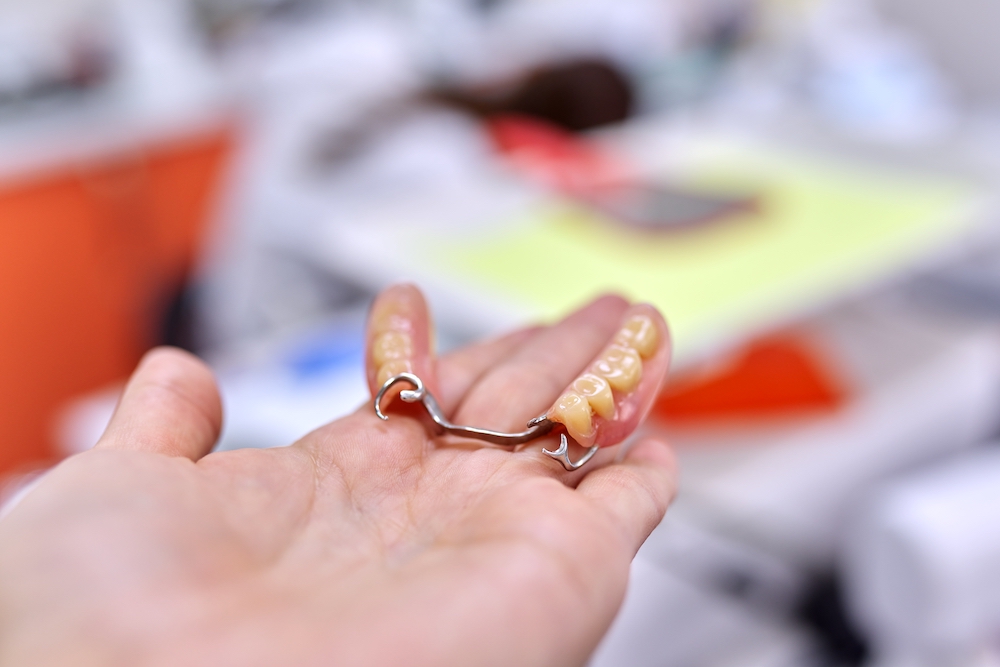A dental bridge is a viable substitute if you don’t require or want detachable dentures or dental implants. This dental device enhances your dental health and gives you an appealing smile while covering the space left by your missing teeth. The fact that dental bridges keep your remaining teeth from moving into empty spaces is one of their most significant advantages. Your teeth’s general alignment may be significantly impacted if this occurs.
You can receive dental bridges in Calgary at any dental clinic. New dental bridges may only be obtained after at least two visits to the dental clinic. The dentist checks your gums and jaw at the initial session to ensure they are sturdy enough to support your new dental bridge and the replaced teeth it will hold. The condition of the teeth that will support the dental bridge must also be examined.
Read More: What are white spots on your child’s teeth, and how can pediatricians help?
Dentists will take a tiny piece of tooth enamel out during your second visit to ensure that the bridge will be securely fastened to the supporting teeth. They will fix it in position, then add the replacement teeth to cover up your missing teeth.
Who would require a dental bridge?
Dental bridges could help if you’ve lost a tooth or teeth. The three most prevalent causes of tooth loss are trauma, gum disease, and tooth rot. Or possibly a congenital disease caused you to be born without teeth. To have a dental bridge, you need healthy teeth on each side of the gap in your smile.
Why should you get a dental bridge?
Dental bridges fill the space left by your missing teeth. Dental bridges assist in restoring your confident smile and missing teeth. You can have lost teeth due to gum disease or an accident. If a dental implant is not an option for you, a bridge can be the solution.
Must See: Understanding dental implants: How they work and what are the benefits?
Speaking and eating can be improved by filling the space created by a missing tooth. A bridge also prevents adjacent teeth from moving out of position due to the gap.
A crown is placed on the teeth next to the gap in a typical type of bridge. The two crowns are then joined together using an artificial tooth or teeth, known as pontics. The fake tooth or teeth are supported between the crowned teeth, also known as abutment teeth. Porcelain, alloys, gold or a mix of these materials can all be used to create bridges.
Four types of dental bridges that you need to know
Traditional bridge
One or more pontic teeth, also known as the abutment or anchoring teeth, are bonded to the neighbouring natural teeth to form a typical dental bridge. The abutment teeth are strengthened with crowns, and pontics are typically made of metal or porcelain fused to ceramic.
Check now: How to straighten crooked teeth?
A conventional dental bridge may be employed if the teeth on either side of the gap are healthy and natural. The two abutment teeth must first be modified to create room for the crown that will be bonded on top and to make sure they are sturdy enough to support the bridge before the crowns can be put.
Maryland bridge
The Maryland bridge, another alternative utilizing two abutment teeth, replaces crowns with metal and resin or porcelain bonding to secure the pontic.
Maryland bridges offer a clear benefit as they do not need to be removed frequently. Instead, the resin is used to bind the stable abutment teeth to the metal attachments for the pontic, which only requires minimal modifications.
Maryland bridges are not the best option for people with severe over, under, or crossbites compared to the other possibilities.
Implant-supported bridge
+Instead of frameworks or crowns, an implant-supported bridge is fixed in place using dental implants in Calgary. One implant is placed in your jawbone surgically for every lost tooth as part of the operation. The bridge is secured in place by these implants. A pontic can be positioned between two implant-supported crowns if it is impossible to place one implant for each lost tooth.
Read Please: Who are dental hygienists, and what role do they play in treatments?
Bridges supported by implants are extraordinarily robust, long-lasting, and capable of reestablishing normal function. You will need two operations to put on this kind of dental bridge since it requires more invasive procedures. In the first, the implants are inserted into the jawbone; in the second, the bridge is put in place. Therefore, be prepared for the procedure to take many months to finish.
Cantilever bridge
The cantilever dental bridge employs an abutment tooth on just one side of the gap, although looking identical to a conventional bridge. It can be employed when another prosthetic restoration covers the neighboring teeth on one side of the gap or when there are no teeth on that side.
The abutment tooth’s enamel is removed to maintain stability, much like a conventional bridge. Although this option is adaptable and only requires one abutment tooth, a cantilever dental bridge cannot bear as much biting force and can only be positioned in the front of the mouth.
Please see: Major reasons for tooth decay and how you should avoid it
Cost of dental bridge
Dental bridges range in price. The sort of bridge you have and where you reside will determine this. Dental insurance mostly covers a small portion of the cost if you have it. Depending on your particular dental plan, coverage may vary.
Comparison between the dental bridge and dental implant
Many dental insurance policies cover bridges, and many now also cover implants. Relying on how well it is taken care of, a dental bridge could need to be updated every five to fifteen years, whereas implants are considered a permanent option.
Dental hygiene is one factor that can shorten the lifespan of all bridge types, including implants. Besides that, you need to keep one more thing in mind after you receive dental bridges in Calgary NE- you must be aware of how to take care of your dental bridges without worrying about making them last longer.
Read More: Stay aware of these symptoms of periodontal gum disease
Conclusion
The condition of the neighbouring teeth, where the missing teeth are located, and the cost of the treatment can all affect your decision regarding the best dental bridge in Calgary. Explore the finest possibilities for replacing lost teeth by contacting The Port Dental Clinic in Calgary, where our dental expert will help you restore your smile and regain that confidence.
Book your appointment: +1.403.345.1110















